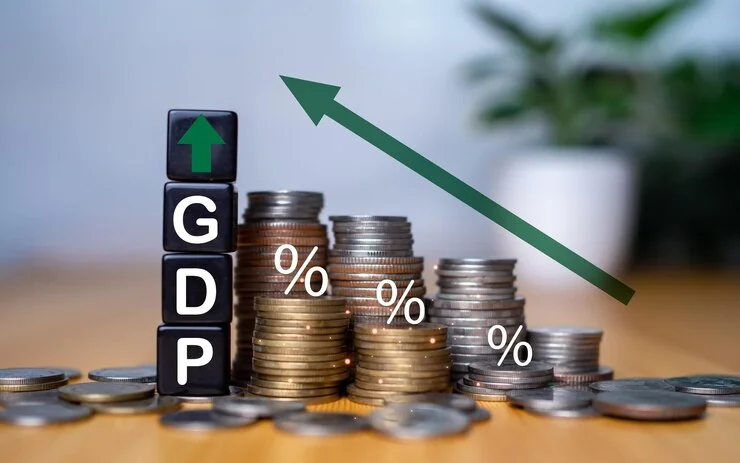Gross Domestic Product (GDP) is one of the most widely recognized economic metrics used to measure a country’s economic health. It encapsulates the total value of goods and services produced within a country over a specific period. However, behind the simple numerical representation lies a myriad of factors and unseen impacts that shape societies in profound ways. This article explores the ‘deleted scene’ of GDP — the hidden and often overlooked aspects that lie beyond the headline figures.
The Basics of GDP: What Does It Measure?
Before diving into the less visible aspects of GDP, it’s essential to understand what GDP is and how it’s calculated. GDP is typically measured in three ways:
- Production Approach: It calculates the total value of output produced in an economy minus the value of goods and services used up in production.
- Expenditure Approach: This approach sums up consumption, investment, government spending, and net exports.
- Income Approach: It adds up total compensation to employees, gross profits for incorporated and non-incorporated firms, and taxes minus subsidies.
These methods should theoretically result in the same number. The aggregate GDP figure helps indicate the size of an economy and its growth rate. However, what this figure doesn’t show are the qualitative aspects of economic progress, such as inequality, environmental degradation, or the real standard of living.
Economic Growth vs. Quality of Life
One of the most significant issues with GDP is that it treats all economic activities equally, regardless of their contribution to societal well-being. For example, an increase in automobile production boosts GDP, but if this leads to increased pollution or congested urban centers, the quality of life might actually decline.
Similarly, GDP often grows in response to disasters and crises. For example, reconstruction after a natural disaster or increased healthcare spending due to a pandemic can inflate GDP. But these scenarios don’t reflect genuine improvements in people’s lives; rather, they signify responses to negative events.
Thus, GDP does not account for how income is distributed across a population. Economic growth could be largely captured by the top 1%, while wages for the average worker stagnate. In such cases, rising GDP might mask increasing income inequality and deteriorating quality of life for many.
Environmental Costs: The Invisible Damage
Environmental degradation is another critical element often left out of the GDP equation. Economic activities that lead to deforestation, depletion of natural resources, air and water pollution, and biodiversity loss may boost GDP in the short term, but they also create long-term environmental challenges that are not reflected in the numbers.
For example, if a country’s economy relies heavily on coal mining, the GDP figure will reflect the value of the coal produced but not the environmental costs associated with mining, such as air pollution or greenhouse gas emissions. This is part of the so-called “GDP illusion” — the focus on output figures without acknowledging the costs incurred.
Many environmentalists and economists argue that GDP needs to be supplemented or replaced with alternative measures that account for environmental sustainability. One such alternative is the Genuine Progress Indicator (GPI), which adjusts for factors like pollution, resource depletion, and income distribution, aiming to give a more holistic picture of economic well-being.
Social Impacts: What GDP Misses
GDP also omits social costs such as poor health, stress, and deteriorating mental well-being.
Similarly, GDP doesn’t account for informal economies, which play a significant role in many developing countries.
Globalization and GDP: The Hidden Costs of International Trade
Globalization has increased international trade, contributing to higher GDP in many countries. However, this growth often comes at a hidden cost, particularly for lower-income nations. While this may boost GDP, it can lead to environmental degradation, loss of biodiversity, and weakened local industries.
Additionally, globalization has accelerated deindustrialization in advanced economies.
GDP and Economic Inequality
GDP growth doesn’t automatically lead to equal benefits for everyone within a society. In fact, in many economies, rising GDP has coincided with growing income inequality. This disparity can have long-term detrimental effects on social cohesion, political stability, and overall economic sustainability.
Looking Beyond GDP: Towards Better Metrics
Recognizing the limitations of GDP has led to a push for alternative metrics that offer a more nuanced view of economic and social progress. Some of these alternatives include:
- Human Development Index (HDI): Combines indicators of life expectancy, education, and per capita income to provide a broader picture of well-being.
- Genuine Progress Indicator (GPI): Accounts for economic, environmental, and social factors to assess whether economic growth is genuinely improving quality of life.
- Gross National Happiness (GNH): Used by Bhutan, this metric prioritizes mental and emotional well-being over sheer economic output.
Conclusion: The Deleted Scene Unveiled
GDP is undoubtedly an essential tool for understanding the size and growth of an economy, but it should not be treated as the sole measure of a nation’s prosperity. Like a movie with deleted scenes, focusing exclusively on GDP ignores the full story of economic growth.








